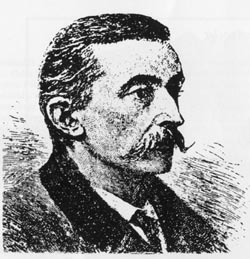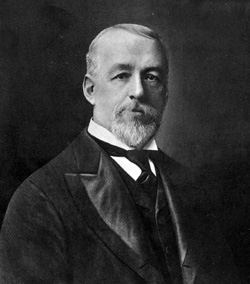Louisiana French Folklore and Folklife
By Barry Jean Ancelet
Louisiana's French-speaking cultures have occupied a prominent place in the study of American Folklore. Prior to the studies made by members of the budding academic discipline, a few literary figures provided much cultural information about Louisiana French culture. LePage du Pratz's Histoire de la Louisiane (1758) is a vivid description of life in the colonial Louisiana. C.C. Robin recorded a wide variety of cultural information in his travelogue, Voyages l'interleure de la Louisiane (1807). An anonymous manuscript (attributed to Louisiana Justice Joseph A. Breaux) is filled with information on Cajun folklife as early as 1840. Nineteenth-century author George Washington Cable based many of his stories on observations he recorded among the Cajuns and Creoles. Journalist Lafcadio Hearn collected Creole proverbs in his Gumbo Zhebes (1885) and foodways in his La Cuisine creole (1885). Alfred Mercier's L'Habitation St. Ybars (1881) includes a vast amount of information on 19th-century plantation folklife.
Tulane professor Alcee Fortier was Louisiana's first folklore scholar. One of the founders of the American Folklore Society, his landmark collection of black Creole animal stories, Louisiana French Folktales, was the second publication in the Memoirs of the American Folklore Society series (1895). In the 1890s, Fortier also organized the New Orleans branch of the AFS, which later became the Louisiana Folklore Society.
In the early twentieth century, much collecting was done by graduate students. Corinne Saucier based her M.A. thesis (George Peabody College, 1923) on her collection of Avoyelles Parish folktales. She expanded this preliminary work in her doctoral dissertation, "Historie et traditions de la paroisse des Avoyelles en Louisiana" (Universite Laval, 1949), under the direction of Ralph Steele Boggs in 1947. Like Saucier, Elizabeth Brandon studied under Lacourciere at Laval. Her study of Vermillion Parish folklore and folklife (1955) included songs and tales as well as social history and folkways. In addition to these major names, a host of M.A. and Ph.D. students, (especially at Louisiana State University under professors Broussard, Major and Guilbeau) collected folklore, especially tales and songs, for their studies of Louisiana French dialects during the 1940s and 50s. Though these studies lack folklore scholarship, they nevertheless provide a veritable mine of information and transcribed texts. The same is true of the Louisiana Writers Project material collected during the Depression under the direction of Lyle Saxon.
While the Louisiana French language was studied for its linguistic interest, it had acquired a social stigma with the Americanization of the Cajuns which began at the turn of this century. Virtually none of this cultural research was recycled in the French classroom. The few who tried, such as Marie Del Norte Theriot, were isolated and even discouraged. A few English professors, such as George Reinecke in New Orleans and Patricia Rickels in Lafayette, eventually began including Louisiana French material in their general folklore classes.
Outside folk music researchers working in Louisiana tended to have a much more activist approach than folktale scholars and linguistics students. When record companies such as Columbia, Okeh, Decca and RCA began recording Cajun music in 1928, they captured the tail end of a formative period in the development of Cajun and Creole music styles. The recordings John and Alan Lomax made in South Louisiana between 1934 and 1937 while documenting the folk music of America for the Library of Congress go even farther back. The Lomaxes avoided popular styles already well documented by the record companies to record unaccompanied singing and solo instrumental traditions, often performed by people who were old then, reaching back well into the 19th century and earlier. One of their guides, Irene Whitfield completed an M.A. thesis on Louisiana French folksongs at L.S.U. in 1939.
Folk music researchers continued to visit French Louisiana. In the late 1930s, Herbert Halpert recorded Creole songs in New Orleans. In the 1940s, William Owens recorded ballads in the Cajun prairies. In the 1950s, I. Bonstein and Harry Oster recorded some of the newly revived Cajun dance music as well as older styles. From his position as a member of the Newport Folk Festival board, Alan Lomax sent Ralph Rinzler to South Louisiana to search for performers in the 1960s. Rinzler brought a Cajun trio to the Newport Festival in 1964. Two of the musicians were simply impressed with the enthusiastic reception they received at Newport. The third, Dewey Balfa, returned to Louisiana determined to bring home the echo of the standing ovation they had received from the crowds. Dewey Balfa worked tirelessly to rehabilitate the tarnished Cajun self-image on the home front. His eloquent advocacy on behalf of traditional culture earned him a reputation beyond his native Louisiana.
Rinzler continued to work with Balfa and members of the Louisiana Folk Foundation to regenerate interest in Cajun and Creole music at the grassroots level. Rinzler and Balfa worked with the Council for the Development of French in Louisiana, established in 1968, to create the Tribute to Cajun Music festival, first presented in 1974 and now an annual event. That same year Rinzler and Roger Abrahams, then President of the American Folklore Society, met with University of Southwestern Louisiana President Ray Authement to lay the foundation for the Center for Acadian and Creole Folklore. Since then, this center has provided a focal point for Louisiana French folklore research. Copies of important past fieldwork has been added to contemporary staff and student research to make for the largest collection of its kind anywhere. The center also organizes festivals and special performances, television and radio programs, and offers classes and workshops through the university's Francophone Studies Program. In 1987, Dewey Balfa and Creole fiddler Canray Fontenot were appointed Adjunct Professors at the University, providing them an institutional base from which to disseminate their rich store of knowledge.
Other state and national programs have added to these efforts. L.S.U.'s School of Cultural Geography, long under the direction of Fred Kniffen, has produced a corps of specialists such as Malcolm Comeaux and Jay Edwards, who have helped to define French Louisiana, primarily through it material culture. Nicholls State University established a center for the study of Louisiana boat building. In 1978, with support from the National Endowment for the Arts, Louisiana's Office of Cultural Development established the position of Folk Arts Coordinator. The very diversity which makes Louisiana so interesting also makes it a daunting challenge for any single folklorist. The first person in this position, Nicholas Spitzer approached it with a creolist's perspective and succeeded in launching folklore programs throughout the state, using the most active areas to prime other neglected regions. The Jean Lafitte National Historical Park, based in New Orleans, provided new opportunities under its charge to "Preserve, protect, and present" the culture of the Mississippi River's delta region. This region has been broadly defined to include most of French Louisiana. Ethnographic reports funded by the park produced the broadest, most extensive collection of information on the Cajuns and Creoles yet assembled.
There has been much research activity of late in French Louisiana. The publication of this research and the presentation of its results in media programs and interpretive centers help to shore up Louisiana's fragile French society with an important element for the survival of any people: a greater understanding of who they are and where they come from.




